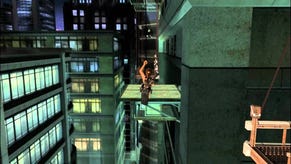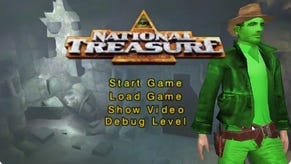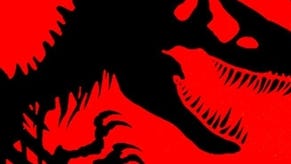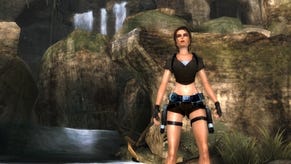Lara Croft Tomb Raider: Anniversary
Happy birthday Lara.
Originally conceived as a celebration of Lara Croft's 10th anniversary, Lara Croft Tomb Raider: Anniversary is now a celebration of eleven years of Lara. Obviously good timekeeping isn't a prerequisite for lissom archaeologists, but is Lara's platforming action more impressive than her punctuality? Eidos recently offered a sneak preview to provide an answer in advance of the game's release.
Like Lara's most recent outing, Anniversary is being developed by Crystal Dynamics, with the involvement of her creator, Toby Gard. It's essentially a reworking of Lara's original adventure, released on the Saturn, PlayStation and PC back in 1996, but Eidos is keen to stress that this isn't just a plain vanilla remake. They like to use the analogy of Peter Jackson's King Kong, which featured the same locations and story as the 1933 original, but brought them right up to date and fleshed them out with additional background narrative. In the same way, Tomb Raider: Anniversary follows the plot of the original, which sees Lara hired by a mysterious syndicate to retrieve an artefact called the Scion, and it ranges across the same locations, including Peru, Greece, and Egypt. But the game's levels are arranged differently and the puzzles, while similar, are solved differently.
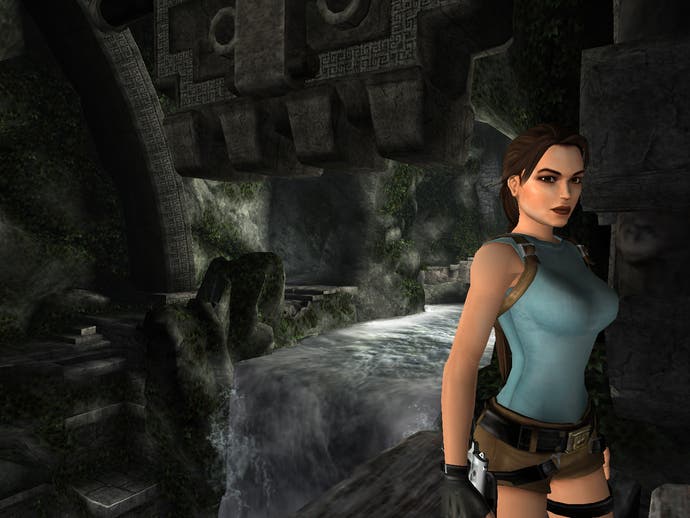
In order to show how this works, the demonstration consisted of one of the game's opening levels, set in the mountain caves of Peru and scene of a memorable cog puzzle in the original. It's still the scene of a memorable cog puzzle; it's just it's a different cog puzzle.
The level opens with a camera sweep showing a waterfall that, as anyone who remembers the original puzzle will notice, has been dramatically enhanced. Originally getting to the top of it involved a pretty simple climb. Now, its sheer size means that scaling it is a considerably greater challenge, involving exploring the surroundings to work out a route to the top using Lara's enhanced repertoire of moves. Indeed all the moves she'd learnt for Legend are back, as is the fluid analogue control - like the last Crystal Dynamics Lara, she's more akin to Spider-Man or Prince of Persia than her earlier ungainly incarnations: grabbing hold of ledges instead of falling off, performing precipitous handstands, and leaping into swan dives. She's even got a grappling hook - and while purists might take issue, it's worth pointing out that, while players couldn't use a grappling hook in the original, Lara certainly could, and did, in at least one cut-scene.
The level is characterised by a marked attempt to return to the sense of archaeological isolation that distinguished the first game in the series; the sense that this is a virgin territory, untainted by human presence for thousands of years. Consequently, most of Lara's enemies are now animals, and Crystal Dynamics has put a lot of effort into honing the AI till their behaviour is believable. Now wolves hunt and attack in pack formations, for example, and bats bears, and dinosaurs all behave in convincing ways. They also sound convincing, and the audio in general contributes to this sense of isolation, with the occasional wolf-howl echoing round the cavern, and antique ropes creaking loudly as Lara swings on them.
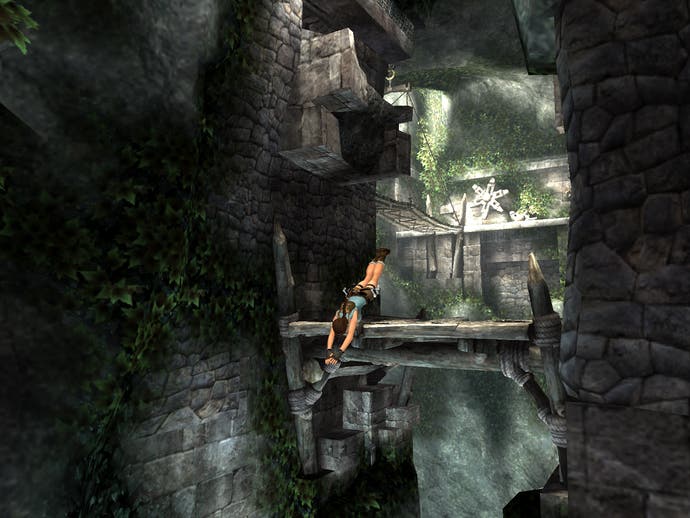
Solving the cog puzzle requires players to find three missing cog pieces, which are scattered round the cavern and as Lara explores her surroundings there are teasing glimpses of hidden areas, such as the underwater cavern that tantalisingly reveals itself whenever she plunges from the top of the waterfall. Indeed, returning the cogs demonstrates the multiple routes that typify the new game's design: once you've found them you can retrace Lara's steps; use a hidden tunnel by leaping across a broken rope bridge and use it to climb downwards; or simply plunge into the waterfall.
And again, after placing the first cog there's further evidence of the way the environments have been dramatically scaled up since the first game, thanks to the fact that Lara has to leap onto the moving cogs and scale the highest reaches of the cavern in order to access the second and third missing cog locations. Then, finally, it's into the Lost Valley, lined by dwellings built into the rock face, all linked by detailed networks of pathways - it's a lot closer to the original vision in the design documents than could have been realised with the blocky 1996 version. And after a quick fight with some raptors, there's the familiar sound of giant dinosaur footsteps before the demonstration teasingly stops.
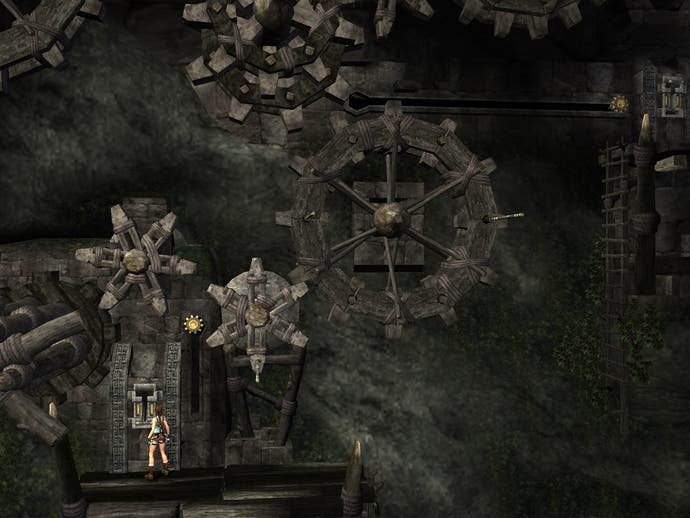
It's certainly a good-looking game, thanks to the use of the same game engine as Tomb Raider: Legend (indeed it continues the trend for a lot of attractive games at the tail-end of the PS2's lifespan). Lara's skin glistens after she gets out of the water, her clothes dirty as she rolls around on the floor, and the environments are as architecturally interesting as those in Legend. Indeed the folk at Crystal Dynamics claim to have learned a lot from the development process of Tomb Raider: Legend, and they aim to respond to a lot of the feedback and criticisms levelled at that game - particularly with regard to the amount of handholding.
As the game's director of design, Noah Hughes, puts it: "One of the great things about working on this game has been the ability to respond directly to the feedback that we got from people who played Legend. One desire going forward was to maintain the degree of accessibility that we achieved on Legend, while upping the challenge for players that wanted it. Tomb Raider Anniversary presents a time in Lara's career when she didn't have her trusty tech team to rely on. In addition to enhancing the isolation and atmosphere of the locations, this allowed us to put the game's hint system back in the player's hands. Players can refer to Lara's Journal for more info if they wish, but it is left up to them when they need a hint, and when they do not."
So: is Lara's platforming action more impressive than her punctuality? Let's just wait and see - but surely marrying the fluid control of Legend with the story and settings that made the original such a success can only be a good thing.



